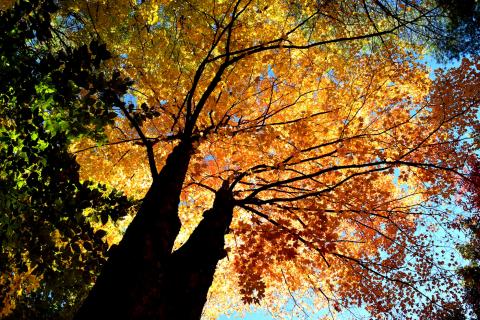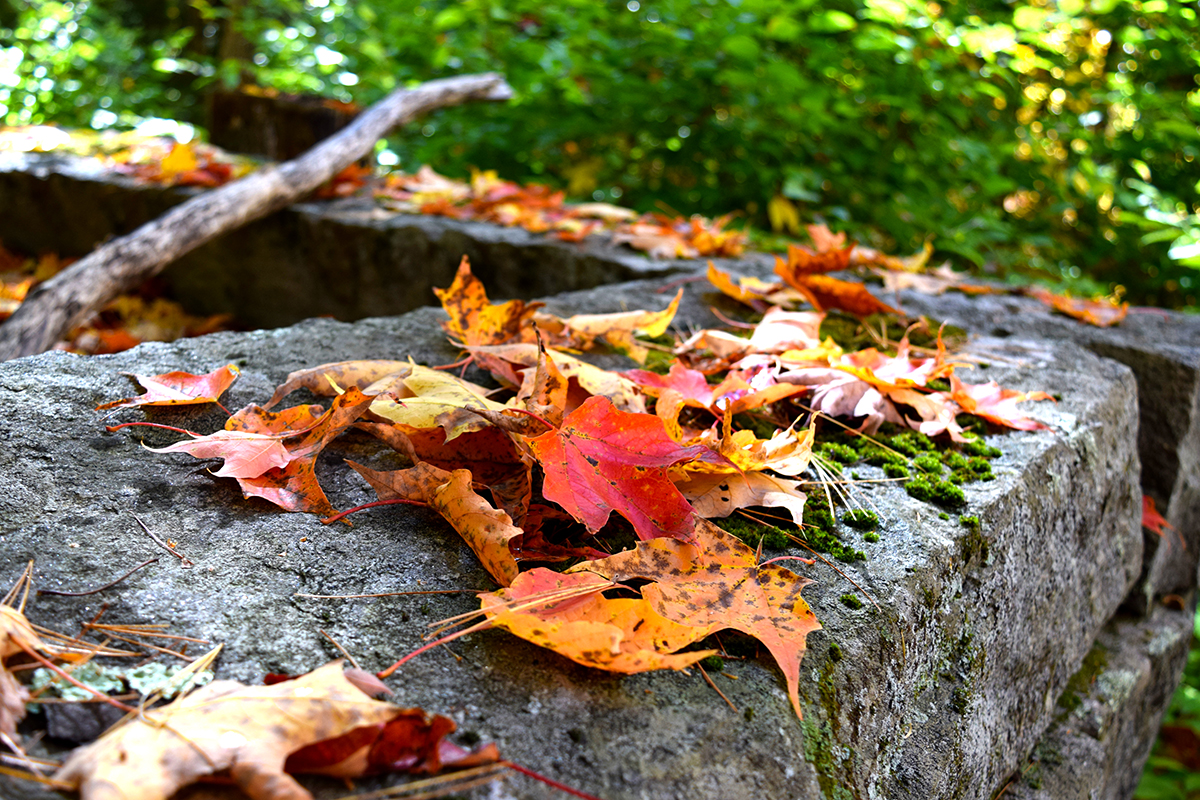How to Make the Most of Fall Foliage Season

As NH residents, we so look forward to our fall season, when trees around us turn bright stunning colors. And who better to give advice on how to appreciate fall foliage, than foresters? Karen Bennett, Extension professor, emeritus and Steve Roberge, Extension state specialist in forest resources, offer their tips for fully enjoying the boldest season our forests have to offer.
One of the best and most overlooked ways to appreciate fall foliage is to get up close and personal with individual trees or small groups of trees. A great way to do this is to drive on rural unpaved roads where you can move slowly and take in the individual trees around you. Because the roads are narrower, the trees are right next to you and sometimes extend overhead, allowing you a perfect view. Walking these roads or other paths in the woods is another way to take time to appreciate individual trees.
A good bet on when to go leaf peeping is the second weekend in October as you are likely to find patches of peak fall foliage in different parts of the state. Another great place to check is NH Tourism’s fall foliage tracker. It’s been very accurate in the past in tracking when and where peak foliage is happening across the state.
Appreciation for Conifers and Evergreens during Fall Foliage
Conifers and evergreen trees are often overlooked during fall foliage season but they provide the perfect backdrop for the brighter, bolder tree colors. Without their green contrast, the bright colors wouldn’t pop nearly as much!
One often unknown fact is that conifers and evergreens do lose some of their needles, but not all of them every year. Every year, needles that are two, three, or four years old drop, but the younger needles stay on the tree giving it the evergreen appearance. Foresters often get calls from folks concerned about conifer or evergreen tree needles turning yellow and falling off in the fall, but losing needles is normal. However, if a white pine tree was losing its needles in June or July, this could be an indication of illness or disease.
Factors that Makes a Great Fall Foliage Season
In general, healthy trees with healthy green leaves are more likely to produce brilliant fall foliage. If you look out your window just prior to foliage season and see lots of green on the trees, that’s a good sign!
Another factor is weather. Ideal weather conditions for colorful fall foliage include sunny days with cold nights. Bright sunny days affect trees in one of two ways: first, the bright sun encourages anthocyanins (red pigments) and second, the same leaf will look different on a cloudy day versus a bright sunny day due to how the leaves reflect different wavelengths of light compared to what they absorb. This means that sunny days allow you to see leaves looking their best and brightest!

The Effects of Drought on Fall Foliage Season
There hasn’t been much rigorous study on the effect of drought on fall foliage. There are some theories that drought can delay foliage or make it happen faster. Droughts that are severe enough can cause early yellowing or browning of leaves. We haven’t seen this happening this year, although there have been some red maples that are experiencing stressful conditions, particularly those in wetlands that aren’t as wet due to drought. In general, though, despite the drought, trees this year still have healthy green leaves. As long as the weather during the season is right—cold nights and sunny days—we should have a good season.
The Upside to the End of Fall Foliage Season
Even though we’d like to see fall foliage season last as long as possible, there are some upsides to the end of the season. One reason is that there’s a nice period of time when the leaves have fallen which visually allows one to see further and see things that might normally be obscured such as stone walls and different trees species. Plus, the ability to walk more freely through forests can be a wonderful experience.
Additionally, once leaves have fallen it’s a good time to scout for invasive species. They often keep their leaves longer than native trees, which makes ID and tagging of invasives that much easier.
Overall, New Hampshire is blessed with a truly stunning fall foliage season, so get out there and enjoy it!